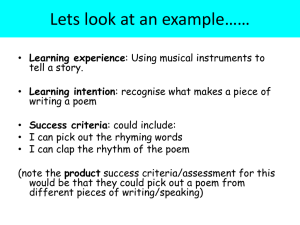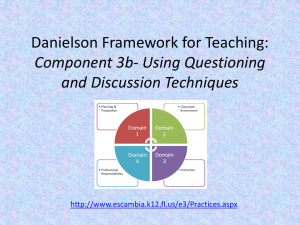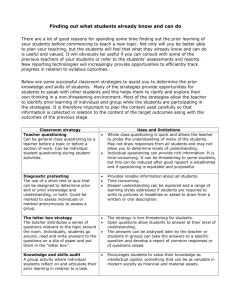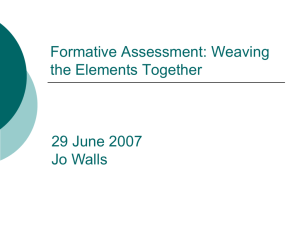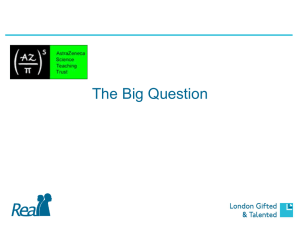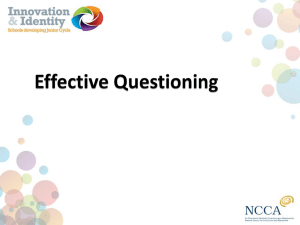Asking Questions Presentation Powerpoint
advertisement
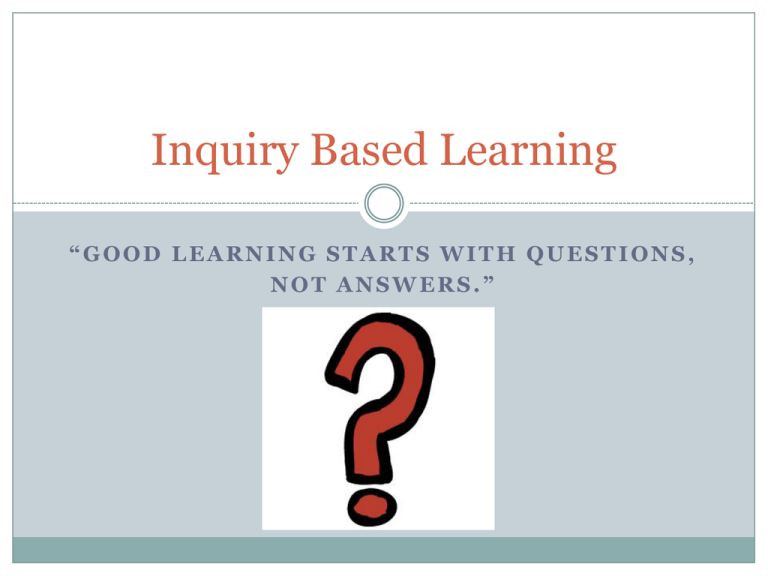
Inquiry Based Learning “GOOD LEARNING STARTS WITH QUESTIONS, NOT ANSWERS.” Using Inquiry Based Learning: Takes focus off of teacher lecturing Gives students more control of learning Allows students to do more thinking Teaches students to be inquisitive learners Makes students responsible for learning Teaches students to take charge of their learning Develops higher order thinking skills Questions Can… Activate Prior Knowledge Clarify Misconceptions Promote Critical Thinking Inspire Further Investigation Check for Understanding Importance of Questioning Questioning is a critical skill for teachers because it is: The most common form of interaction between teacher and pupil; An element of virtually every type and model of lesson; A key method of providing appropriate challenge for all pupils; An important influence on the extent of progress made; The most immediate and accessible way for a teacher to assess learning. (http://teachertools.londongt.org/en-GB/resources/Ks3_module_questioning.pdf) Purposes of Questioning To interest, engage and challenge pupils To check on prior knowledge To stimulate recall and use of existing knowledge and experience in order to create new understanding and meaning. To focus thinking on key concepts and issues. (http://teachertools.londongt.org/en-GB/resources/Ks3_module_questioning.pdf) Purposes of Questioning To extend pupils’ thinking from the concrete and factual to the analytical and evaluative. To lead pupils through a planned sequence which progressively establishes key understandings. To promote reasoning, problem solving, evaluation and the formulation of hypotheses. To promote pupils’ thinking about the way they have learned. (http://teachertools.londongt.org/en-GB/resources/Ks3_module_questioning.pdf) ‘We learn by asking questions. We learn better by asking better questions. We learn more by having opportunities to ask more questions.’ -Morgan and Saxton (1991) Purpose of Questioning If we as instructors can ask better questions, then our students will learn more. Students will learn to ask good questions through our modeling. Once we begin to use effective questioning, we can then work to have students use this skill in lessons and develop their own questions. A Model for Questioning: Bloom’s Taxonomy Hierarchy of question difficulty. Lower level questions build a foundation. Move toward more complex, higher order thinking questions. The idea is that once students have the lower level thinking skills, they should be moving toward the higher order thinking skills. Assignment Five sections: use links to videos and PDFs as well as the documents provided in the email that will be sent after training call. Complete all five sections and then submit. The last section allows you to formulate actual questions to use in a lesson plan based on the tiers in Bloom’s Taxonomy. Section 5: Creating Questions Are based on the standards chosen for that lesson. Can be incorporated in with the objectives section as a planned way to assess their learning. Start at most basic and move toward higher level. Creating Questions 1. 2. 3. 4. 5. 6. 7. Choose a standard. Determine what is being asked of the student. Review the tiers of Bloom’s Taxonomy. Choose which tier it would fall under. Use key words and question starters to formulate a question. Try it out! Rephrase if necessary. Creating Questions Standard: GLE 0007.9.1 Describe an object by its observable properties. Knowledge: What are the observable properties of the plant for your terrarium? Comprehension: How is it the same/different than plants outside your house? (compare/contrast) Creating Questions Standard: 7.3.2 Design a model of a habitat for an organism in which all of its needs would be met. Application: What would happen if you didn’t water your terrarium? Analysis: What is the relationship between transpiration and the plant in your terrarium? Creating Questions Standard: 7. T/E.5 Develop an adaptive design and test its effectiveness. Synthesis: How would you improve your terrarium? Why did you choose to do that? Did it work like you thought it would? Creating Questions Standard: GLE 7.9.3 Investigate factors that affect the rate at which various materials freeze, melt, or evaporate. Evaluation: How could you determine the best place to put your terrarium in your home? How would you prove it was the best place? (This is a great one to have them actually do.) Assignment Five sections: use links to videos and PDFs as well as the documents provided in the email that will be sent after training call. Complete all five sections and then submit. 2.5 hours to review the materials and complete the assignment sheet. .5 added on to lesson planning time to create questions to use during the lesson. Send feedback of your experience using the questions.
